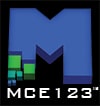
This invention concept pertains to a psychiatric clearance system, that is a mostly silent application that monitors and ensures the proper mental health of an employee at all times. The program activates when an agent of an agent-agency relationship of an organization shows aggression, or paranoia, or other odd behaviors such as psychosis, that is outside normal operating parameters for an agent of the agency, to ensure the safety of others. The professional digital psychiatrist appears within the visual cortex of the agent, and speaks to the psychiatric patient, whereas the agent could be a police officer, a civilian military official, or a soldier, and that digital psychiatrist interacts with the agent to diagnose and de-escalate the situation that landed them in the clearance system, at least until they get help from their local health practice.
The psychiatrist runs on an artificial intelligence system, that adapts based on the thoughts of the agent to help the agent improve their cognitive functions, and develop as a better agent of the agency within the organization. The system can disable all forms of communication that the agent has access to, such as Artificial Telepathy Systems, for instance if the agent is suicidal, or is about to break the law. The AI psychiatrist can report to a duty supervisor for the specified agency that the agent is associated with, and provide updates on their condition. The psychiatric models can help to clear out bad memories that are damaging towards the agent, which won't modify any evidence, however will make the agent's life better and to get through the condition or episode that they are in, so they can effectively return to work as a normal employee again.
The AI psychiatrist can remain active at any time, even if the digital psychiatrist isn’t apparent to the agent, to monitor all speech patterns and other communication methods of the agent at all times, and activate when needed. This technology can provide historical and real-time data to a clinician staff or psychiatric office associated with the patient, securely, as well. The systems could use Artificial Telepathy to communicate telepathically, or based on thoughts, alone, without making it appear that the agent is talking to themselves, such as in the case that it was a holographic representation of their own digital psychiatrist implanted in their visual range, in front of them, as a digital person, which only responds to active speech out loud. This protects the agent from appearing to have a psychotic episode.
The AI psychiatrist can also correct memories by modifying them, or altering the brain’s synapses to correct information that is damaging towards the agent, by modifying how the agency's software programs work to communicate with and understand the agent, to ensure that the agency is not overbearing, and is only interested in ensuring its organizational goals, and also the support of its agents as employees of its organization. This could correct conditions such as Schizophrenia or Dementia, to make an agent more successful over time, long into the future.
This program would never use derogatory terms such as "crazy" or "coo coo's nest", or statements like "you're insane!" This program would be very polite and professional, to work out psychiatric conditions, whole heartedly within the computer systems, in the same ways that their own psychiatrist would, just remotely and digitally. The program would always come on whenever they are having a psychiatric episode, for example.
The private industry would benefit greatly from an Artificial Telepathy Systems program that works in this way, the government has admitted to, online. The government currently has a national security program which has a psychiatric clearance system inside of it, however the program is erratic, and doesn't cooperate properly with investigations by law enforcement into details about its staff, when its staff is bothering the public. The program also needs to be beneficial to mental health patients in public, rather than just another conduit for government employees to damage mental health patients, and allowing features that are similar to other programs described, such as a wellness and recovery system that later transitions into a professional computer system for any mental health patient to become an employee of a corporation that manages computer instances, is another offering that should be provided, or perhaps the programs should not be provided at all if the risks outweigh the benefits for the patient.

















